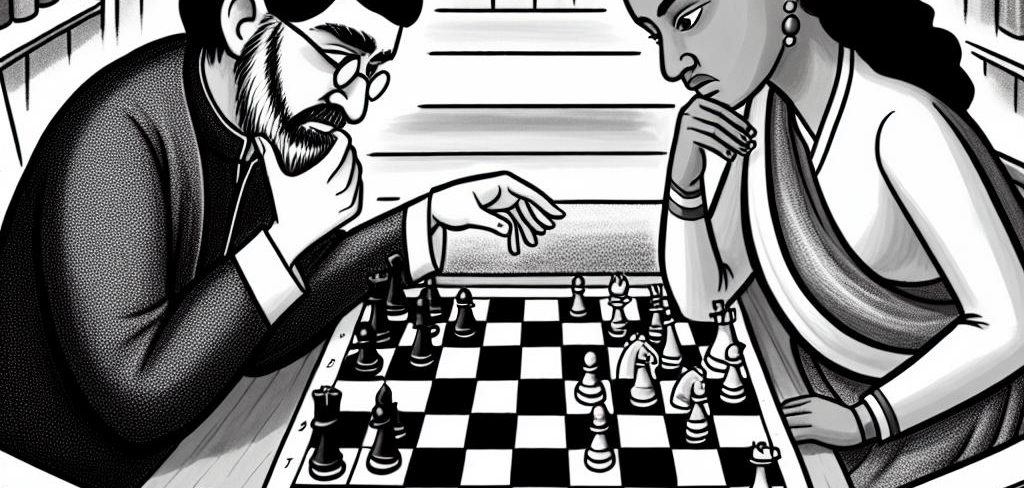The Role of Opening Principles in Chess
Understanding opening principles in chess is crucial for players aiming to improve their game. These principles serve as guidelines that help players make sound moves and develop their pieces effectively at the start of a game. Mastering these fundamentals can often dictate the outcome of a game and provides a solid foundation for advanced strategies.
Key Opening Principles
Openings in chess are not just sequences of moves; they are a series of strategic considerations that shape the midgame. The primary objectives include controlling the center, developing pieces efficiently, and ensuring king safety.
Control the Center: One of the fundamental principles in chess openings is to control the central squares (e4, e5, d4, and d5). Dominating the center allows players more mobility for their pieces and more control over the board, making it easier to mount an attack or defend. The control of these pivotal squares can be achieved through precise pawn placements and coordinating pieces to exert influence over these key areas.
Piece Development: Developing pieces in the opening is crucial. This means mobilizing knights and bishops to active squares where they influence the center and support pawn structures. Time is of the essence in the opening, and each move should aim to enhance the activity of your pieces. Effective development of pieces ensures that all the elements are optimally positioned for future maneuvers, contributing to a harmonious setup that supports both offensive and defensive operations.
King Safety: Ensuring the safety of the king is vital. Typically, this is achieved by castling early in the game. Castling not only places the king in a safer position but also connects the rooks, which is instrumental for their development in midgame. By consolidating the king’s position and establishing rook collaboration, players can secure their defensive posture while setting the stage for future opportunities.
Why Understanding Opening Principles Matters
A firm grasp of opening principles equips players with a systematic approach to the start of the game. Instead of memorizing complex opening variations, players can make logical decisions based on these principles. This enables adaptability, as the player can respond effectively to the opponent’s moves. By focusing on principles rather than rote sequences, players are better prepared to tackle unfamiliar positions, gaining the flexibility to navigate the board with confidence.
The Impact on the Overall Game
Mastery of opening principles positively impacts the middle and endgame phases. Proper opening development leads to better piece coordination, stronger pawn structures, and more tactical opportunities. Players often find that a well-played opening makes the transition to midgame much smoother, providing a strategic advantage. The fluid, coordinated play developed during the opening phase lays the groundwork for controlling the pace and direction of the game, facilitating progress toward a favorable position.
For instance, effective control over the board in the opening can create avenues for aggressive tactics like forks, pins, and skewers. Conversely, inadequate adherence to opening principles can leave players vulnerable to mounting pressures from their opponent, compromising the integrity of their setup and leading to weaknesses that can be exploited.
Resources for Further Learning
For players looking to enhance their understanding of opening principles, there are numerous resources including books, online courses, and instructional videos. One such resource to consider is Lichess, an online chess platform offering free lessons on openings. Additionally, platforms like Chess.com provide comprehensive tutorials and community discussions catering to various skill levels. These resources allow players to choose the most effective learning method tailored to their personal preferences and goals.
By dedicating time to learn these principles, players can develop a more strategic approach to the game, increasing their proficiency and success on the chessboard. Engaging consistently with such resources fosters a deeper understanding of the complexities of chess, equipping players with insights that enhance their overall gameplay. Diversifying learning methods—from engaging with interactive exercises to reviewing classic games—can offer players unique perspectives, reinforcing their grasp of essential concepts while encouraging holistic development.
The dynamic and complex nature of chess offers endless possibilities for exploration. A focus on foundational principles during the game’s opening equips players with the necessary tools to navigate these possibilities adeptly, fostering both strategic depth and tactical acuity. As players advance in their journey, the knowledge and skills honed through focused study of opening principles contribute significantly to honing their proficiency, ultimately amplifying enjoyment and achievement in the captivating realm of chess.



